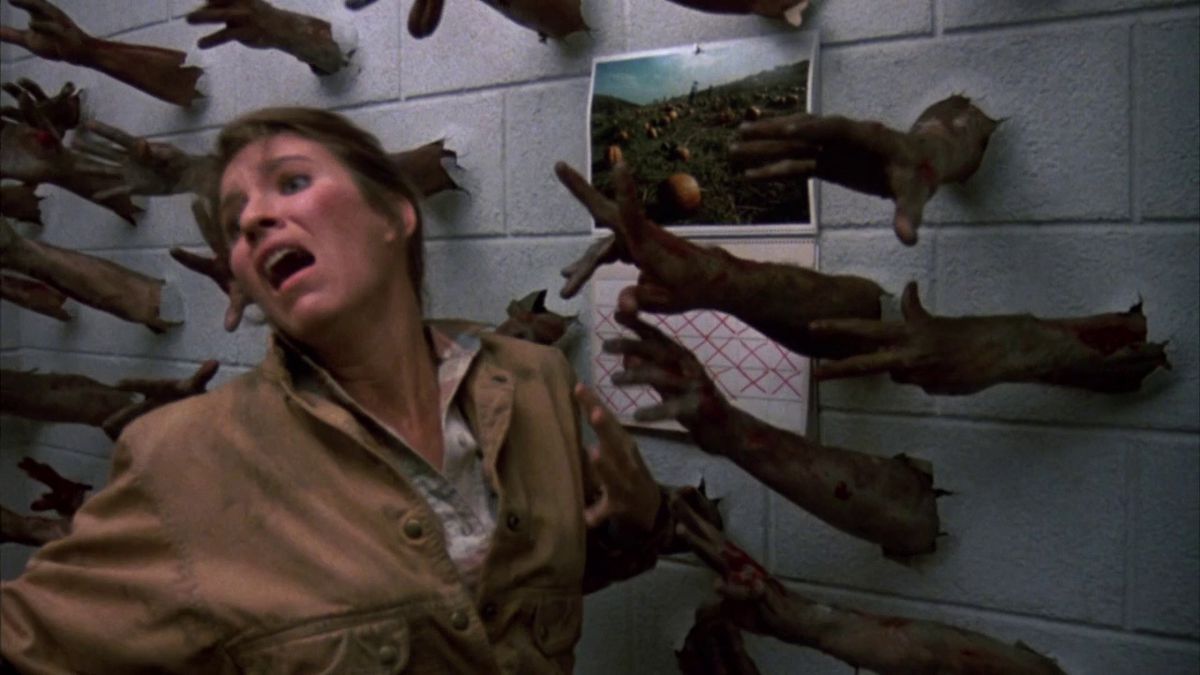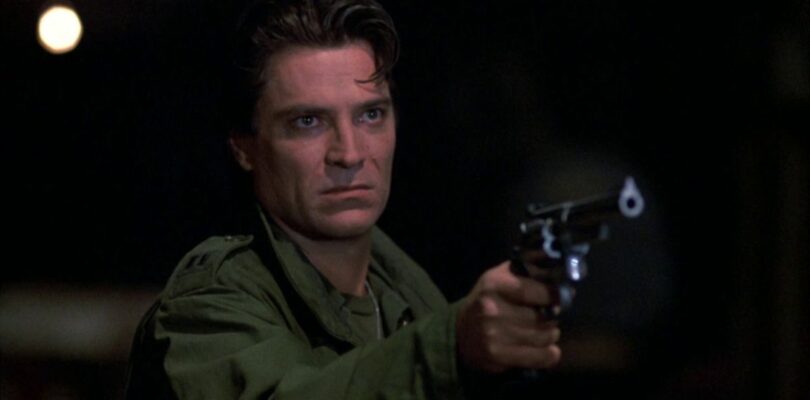No director has done more to define a genre than George A. Romero with zombie flicks. Without the groundbreaking, lo-fi chills of Night of the Living Dead or the high-octane, satirical thrills of Dawn of the Dead, zombie fans wouldn’t have the likes of The Walking Dead, Army of the Dead, or the seemingly endless horde of zombie thrillers to choose from. But in 1985, Romero’s true opus was rejected by critics and audiences alike. That movie was Day of the Dead, a grim post-apocalyptic parable whose politically charged subject matter and focus on ensemble drama may have alienated the escapist-seeking audiences of the ’80s, but makes it a perfect zombie tale in the age of elevated horror.
Day of the Dead centers on a team of military and scientific personnel sheltering in an underground bunker to survive the zombie outbreak. As the scientific team experiments on undead subjects to finalize a cure, tensions rise between them and the hostile soldiers led by the power-mad Captain Rhodes, reaching critical mass when the survivors learn the secret behind the lead scientist’s experiments. But those tensions reside primarily within the human factions, rather than the human-versus-zombie conflicts viewers had come to expect from the genre. Sure, Night of the Living Dead and Dawn of the Dead excelled because of their depictions of human struggles as much as for their jaw-dropping gore, but Day of the Dead takes it to the next level, playing out as a taut political thriller within the apocalyptic backdrop.
While many moviegoers at the time weren’t impressed with the film’s emphasis on human drama rather than zombie carnage (critic Janet Maslin noted that “a lot of [the film] is devoted to windy argument”), Day of the Dead is a devastating portrait of humanity that finds its true antagonist in man’s hubris rather than in undead cannibals.
Image: United Film Distribution Company
That “windy argument” pays off because Romero’s so adept at drama and character-building that he can make us root for the zombies. If you can’t imagine that, then try watching Day of the Dead and not cheering for Bub the Zombie. It can’t be done. It also helps that the human antagonists have less humanity than their undead counterparts. Joe Pilato’s legendary performance as Captain Rhodes perfectly embodies the very same reactionary anti-science and state-sponsored violence that strained progress during our very own pandemic. While Romero offers a glimmer of hope for the audience with the movie’s more sympathetic characters, Rhodes constantly threatens humanity’s survival to the point that you’ll practically forget about the zombie outbreak above ground, because hell is already about to break loose between the not yet undead.
In addition to the weighty themes and ratcheting suspense, Day of the Dead is also makeup and special effects maestro Tom Savini’s finest hour. A frequent Romero collaborator who made a name for himself with splatterfest hits like Dawn of the Dead, Maniac, and Friday the 13th, Savini outdoes himself with the zombie makeup and gore effects. As opposed to the playful, comic book-style violence of Dawn of the Dead, Savini’s work is so convincing that even the most enthusiastic gorehound would find it stomach-churning. More importantly, his effects have never been put to better use. Day of the Dead doesn’t just offer a spectacle of dismemberment; the ultraviolence works in tandem with the themes at play and feels entirely earned.

Image: United Film Distribution Company
Day of the Dead has already been developing a cult following, steadily shedding its reputation of being the franchise’s black sheep. The critical disappointment of the subsequent Dead films probably contributed to that, but it’s been finding its audience. Stranger Things even gave it a shoutout when four of the protagonists sneak into a screening of it in the season 3 premiere.
The irony is that zombie movies have often been accused of being brainless entertainment, but George Romero proved them wrong. Dead wrong. Day of the Dead has only gotten richer in subtext. It’s not just the most gut-wrenching zombie movie ever made (a description Romero and Savini make quite literal), it’s a humanist masterpiece of survival, and what survival even means for us in the first place.
Alas, Day of the Dead’s reappraisal has yet to take the full swing of The Thing, which went from being a potential career-killer for John Carpenter to his most venerated work. Be a part of that real time reappraisal today and check out or rediscover Day of the Dead, which is now on Hulu as well as Peacock and ad-supported platforms like Tubi, Pluto TV, Crackle and Plex.





